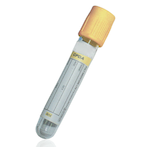
- Home
- Clinical Chemistry Tests
- Cancer Antigen 15-3 (CA 153)
Cancer Antigen 15-3 (CA 153)
Specimen Volume
1mL blood (~250uL sample)Turnaround Time
24 hoursSample Processing In Laboratory
No special requirementsSample Stability
5 days at 2-8°CGeneral Information
Carbohydrate Antigen (CA) 15-3 is a high molecular weight (250-500 kDa) transmembrane glycoprotein of the mucin family and it is encoded by the MUC1 gene. It is defined by reactivity with two monoclonal antibodies (DF3 and 115D8) in an immunometric assay. Its exact function is unknown but it is thought to have a role as a lubricant and in cell adhesion. CA15-3 is found on the cell surfaces in the gastrointestinal, respiratory and reproductive tracts and in the breast, and in low concentrations in the serum of healthy adults. Serum concentrations are similar in men and women, and pregnancy, lactation and menopause do not appear to alter serum CA15-3 concentrations significantly. The half-life of CA15-3 in serum is unknown.
CA15-3 is mainly used as a marker of breast cancer. Preoperative CA15-3 concentrations are only elevated in 30-40% of patients with primary breast cancers, although the proportion of patients with elevated values tend to increase with stage or size of the primary tumour. This means that CA15-3 has no role to play in the screening or diagnosis of breast cancer. In contrast, more than 70% of patients with distant metastasis have elevated marker concentrations. Concentrations can be particularly elevated when either bone or liver metastasis is present. Post-operative concentrations are a strong prognostic indicator.
CA15-3 is not organ-specific and serum concentrations may be elevated in the following malignancies: colorectal cancer, ovarian carcinoma, lung cancer and pancreatic cancer. Therefore, serum CA15-3 measurement alone is of little use in identifying unknown primary cancers in patients with undifferentiated metastases.
Serum CA15-3 concentrations may be elevated in the following benign conditions: hepatitis, liver cirrhosis, benign diseases of the ovaries, lungs and breasts. CA15-3 is removed from circulation by the liver, so chronic liver disease, particularly with ascites, may cause elevated serum concentrations. Elevated serum CA15-3 concentrations are not absolute evidence of the presence of malignant disease, and should be used in conjunction with other diagnostic and clinical information.
Patient Preparation
No special patient requirements. Serum assay only/ Blood must be collected into a yellow/red top vacutainer.
Notes
Reference Range
<31.3 KU/L
Source of Reference Range
Abbott DiagnosticsSpecifications
- EQA Status: IMMQAS
- EQAS Scheme: Yes
Creation Date
Monday, 08 August 2011Modification Date
Monday, 10 February 2020General Information
Location of Laboratories
Copyright UHB Pathology 2018
Protection of Personal Information – Clinical Laboratory Services comply with the Trust Data Protection Policy and have procedures in place to allow the Directorate and it’s employees to comply with the Data Protection Act 1998 and associated best practice and guidance.
University Hospitals Birmingham medical laboratories at Queen Elizabeth Hospital, Heartlands Hospital, Good Hope Hospital and Solihull Hospital are UKAS (United Kingdom Accreditation Service) accredited to the ISO 15189:2012 standard. For a list of accredited tests and other information please visit the UKAS website using the following link: https://www.ukas.com/find-an-organisation/
- Molecular Pathology is a UKAS accredited medical laboratory No. 8759
- Biochemistry is a UKAS accredited medical laboratory No. 8910
- Haematology and Transfusion is a UKAS accredited medical laboratory No. 8784
- Clinical Microbiology is a UKAS accredited medical laboratory No. 8760
- Cellular Pathology is a UKAS accredited medical laboratory No. 10141
- Musculoskeletal laboratory is a UKAS accredited medical laboratory No. 9897
- Heartlands, Good Hope and Solihull Hospital pathology laboratories are a UKAS accredited medical laboratory No.8217.
Tests not appearing on the UKAS Schedule of Accreditation currently remain outside of our scope of accreditation. However, these tests have been validated to the same high standard as accredited tests and are performed by the same trained and competent staff.
For further test information, please visit the test database: http://qehbpathology.uk/test-database
For further information contact Louise Fallon, Quality Manager, 0121 371 5962
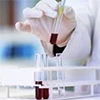 Biochemistry
Biochemistry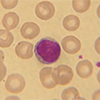 Haematology and Transfusion
Haematology and Transfusion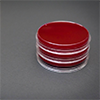 Clinical Microbiology (Including Virology)
Clinical Microbiology (Including Virology)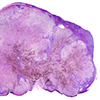 Cellular Pathology
Cellular Pathology General Information
General Information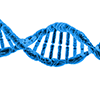 Molecular Pathology
Molecular Pathology